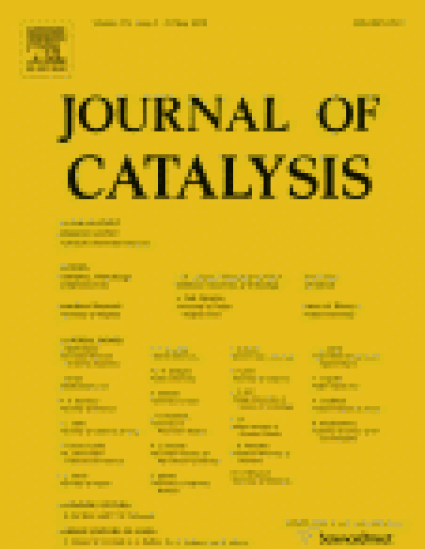
Article
Mössbauer spectroscopy investigation and hydrodesulfurization properties of iron-nickel phosphide catalysts
Journal of Catalysis
(2010)
Abstract
Unsupported and silica-supported FexNi2−xPy catalysts having a range of metal compositions (0 < x ⩽ 2.0) were investigated using Mössbauer spectroscopy, and the results correlated with the surface and hydrodesulfurization (HDS) properties of the supported catalysts. Mössbauer spectroscopy permits determination of the relative site occupancy of Fe atoms in tetrahedral (M(1)) and pyramidal (M(2)) sites in the FexNi2−xPy materials. Fe atoms preferentially occupy M(2) sites for materials with significant Fe contents (x > ∼0.60), but the Fe site preference reverses as the Fe content decreases (x < ∼0.60). Similar occupation trends are observed for the unsupported and silica-supported FexNi2−xPy materials Thiophene HDS measurements of the FexNi2−xPy/SiO2 catalysts revealed catalysts with high Fe contents (0.80 ⩽ x ⩽ 2.00) to have low activities, while the activities of Ni-rich catalysts increased dramatically with increased Ni content (0.03 ⩽ x ⩽ 0.60). The highest HDS activity was measured for a catalyst having a nominal precursor composition of Fe0.03Ni1.97P2.00/SiO2; this catalyst was 40% more active than a optimized nickel phosphide catalyst prepared from a precursor having a nominal composition of Ni2.00P1.60/SiO2. The 25 wt.% Fe0.03Ni1.97P2.00/SiO2 catalyst also had a dibenzothiophene HDS activity just over 10% higher than that of the 25 wt.% Ni2.00P1.60/SiO2 catalyst at 548 K. The trend of increasing HDS activity for the FexNi2−xPy/SiO2 catalysts correlates with preferential Fe occupation of M(1) sites (and, therefore, Ni occupation of M(2) sites). Supported by X-ray photoelectron spectroscopy and oxygen chemisorption measurements, we conclude that the high activity of Ni-rich FexNi2−xPy/SiO2 catalysts can be traced to a high surface density of Ni in M(2) sites that are resistant to site blockage due to S incorporation.
Keywords
- Hydrodesulfurization,
- HDS,
- Mössbauer spectroscopy,
- Nickel phosphide,
- Bimetallic phosphide,
- Iron-nickel phosphide
Disciplines
Publication Date
May 25, 2010
DOI
10.1016/j.jcat.2010.03.016
Publisher Statement
Published by Elsevier
Citation Information
Amy F. Gaudette, Autumn W. Burns, John R. Hayes, Mica C. Smith, et al.. "Mössbauer spectroscopy investigation and hydrodesulfurization properties of iron-nickel phosphide catalysts" Journal of Catalysis Vol. 272 Iss. 1 (2010) p. 18 - 27 Available at: http://works.bepress.com/takele-seda/4/
